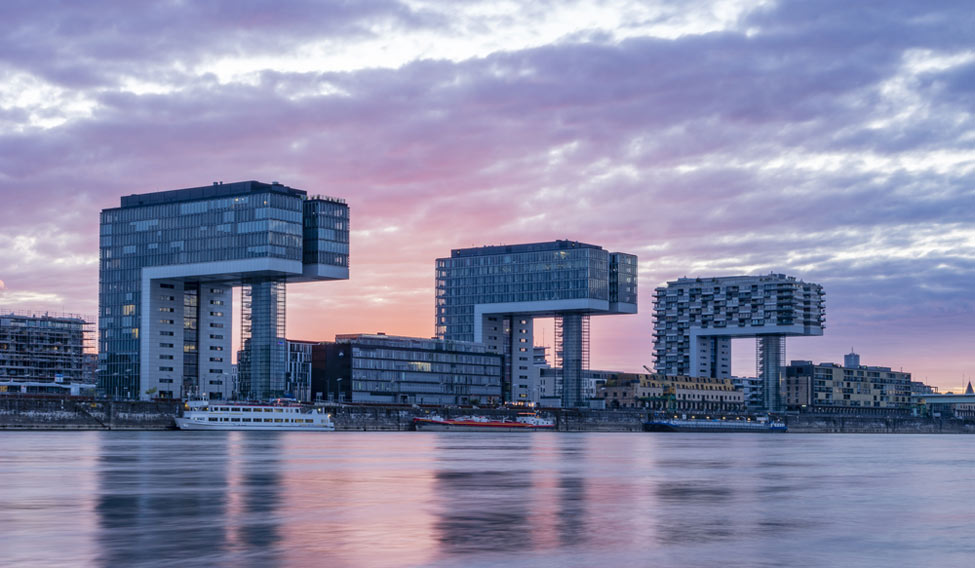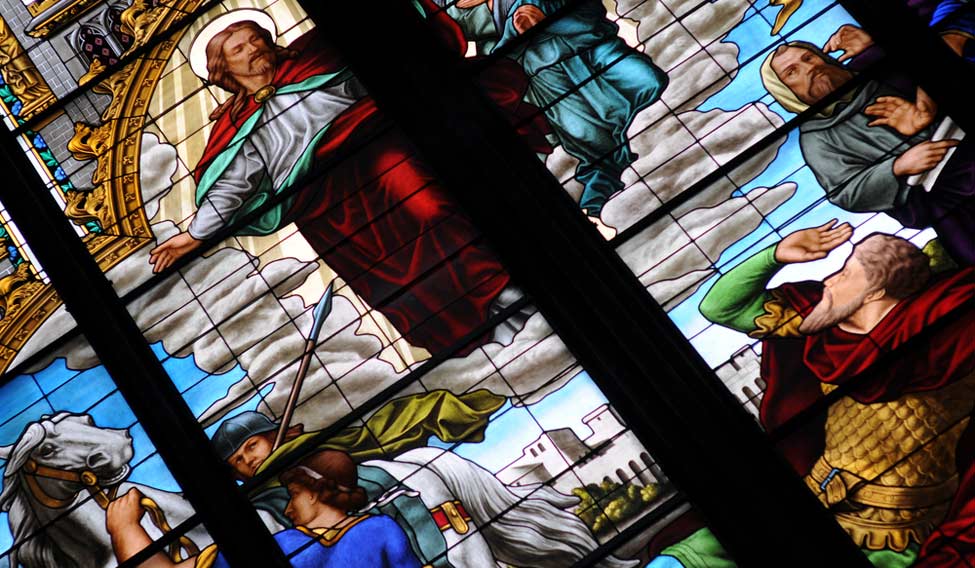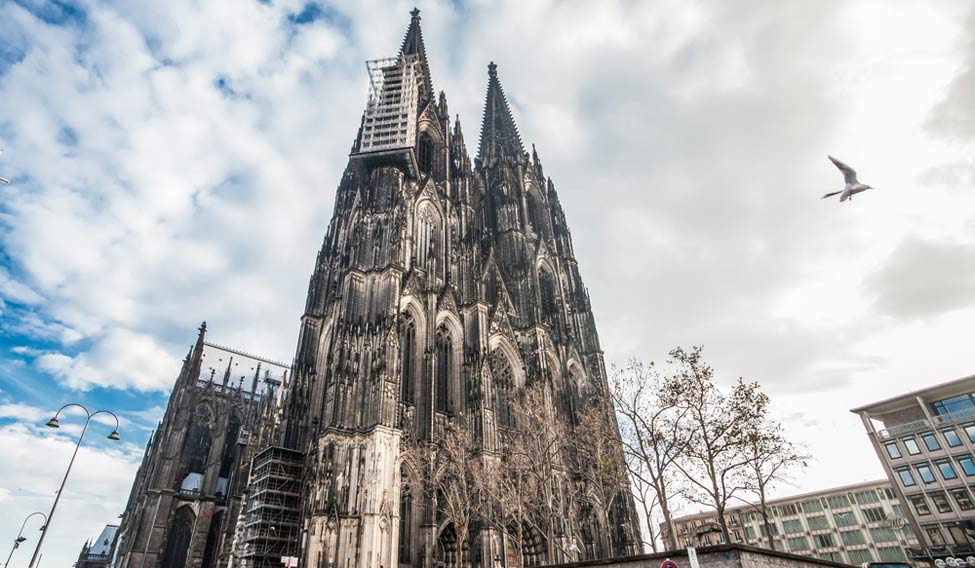Long, long ago, they say that the city of Cologne in Germany was helped by tiny elves called Heinzelmännchen. When the people of the town went to bed, the Heinzelmännchen came along and finished up all the work like washing, cleaning and housework that had been left undone. But the wife of a certain tailor became curious and tried to find out the secret. She scattered dried peas all over her floor, and at night the elves slipped on them and hurt themselves. They got so angry that they left the town and never came back. The people of the town had to do all the work themselves from that day onwards! I am at the Old Market square of Cologne in front of the Fruh brewery, looking at a frieze of the story of the elves, near a fountain. My guide Monica Brieskorn smiles, as she tells me the legend. I fall instantly in love with this city, with a sense of humour and whimsy.
Stepping out of the station in Cologne, Germany, the first thing that catches my eye is the magnificent Cathedral towering above, with its filigree spires and steeples, some covered with tarp and cranes. The Koln Dom is the center piece of the city of Cologne, one of Germany’s oldest cities. Originally construction began in 1248; it was gradually built over five centuries, explains Monica, and it is still a work-in-progress. Its upkeep is looked after by a team of restorers, stone masons, gardeners and roofers. Come evening, a band of falcons fly around the Cathedral to keep away the pigeons which cause a lot of damage to the building!
I love the imaginative gargoyles dotting the façade which help channel the rain water. These range from devils to animals. Even though a large section of the Dom was destroyed in bombing during the World War II, miraculously, the original stained glass panels escaped destruction. Carved oak pews, statues on pedestals, and a shrine embellished with precious stones which is said to hold the remains of the Three Magi, this is a visual feast. What catches my eye are the modern pixel stained glass windows designed by artist Gerhard Richter which bring in a gamut of colours in small squares! As the sunshine floods into the church through that window, it looks like a rainbow on the ground.
 The 17-storey Kranhauser
The 17-storey Kranhauser
Cologne is one of Germany’s oldest cities and started as a Roman outpost called Colonia in 50 AD. The Rhine formed the border between the Romans and the Germanic tribes on the other side. As I walk through the streets I see evidence everywhere of its Roman past — from fragments of city walls to arches, and foundations in car parks of buildings. There is even a section of the Roman sewer which is accessible to the public. History whispers from every corner in the city. A touching reference are the various 'stumbling blocks' around town that are embedded in the cobblestones and bear the name of one victim of the Nazi regime. Another modern counterpart has the names of famous people who died of AIDS.
My guide Monica tells me that Cologne has always been an independent and rebellious town. “As far back as 1396, the Cologne guilds proclaimed their own constitution with a mayor,” she adds. It has also been the home of famous inventors and scientists like Nicolaus August Otto who invented the internal combustion engine and Georg Simon Ohm who came up with the 'Ohm's Law' formula. It has been a major religious centre and today has as many as twelve Romanesque churches dotting the city. I explore its Old town walking down cobbled lanes with medieval buildings — most of it was destroyed in World War II and re-built meticulously.
But Cologne is not all time warp. Its people are known for their joie de vivre and the city has one of the highest concentration of pubs, open air cafes and beer halls, serving the local lager called Kolsch, in slim glasses. It also has a vibrant café culture, with people feasting on strong coffee and cake. We walk on the iron railway bridge called Hohenzollenbrucke, with thousands of love padlocks — where couples lock the railing and throw the key into the river, symbolically declaring their everlasting love! To see another side of Cologne, I take a tram to the hipster district of Ehrenfeld, where different cultures come together in a mesmerizing melee. Walls are covered with bright graffiti and cafes redolent with the smell of coffee, are filled with immigrants of different nationalities.
To see Cologne from a new angle, I take a cruise down the river Rhine. From the cruise boat I see green spaces along the river bank, with people lounging or jogging, some on kayaks and a view of the spires of Old town. We pass the new area of Rheinauhafen, where old buildings like granaries and warehouses have been repurposed and stunning new buildings like the three, 17-storey 'Kranhäuser' or Crane towers, rise to a height of about 60 meters. These resemble hoisting cranes, and today define the skyline on the west bank of the Rhine.
 Stained glass panels of Klon Dome
Stained glass panels of Klon Dome
Most people know the city, from the name of the legendary fragrance, Eau de Cologne. Today the House of Farina, who is the inventor of this perfume, has a retail shop and museum giving you an insight into the history of this iconic fragrance. The classic fragrance is made from essences like lemon, orange, bergamot, mandarin, lime and grapefruit. My guide dressed in period costume takes me down the ages to a time, when perfume was worn to mask body odour as people used to bathe only about once a week! It was once the preserve of only wealthy and aristocratic people.
At Domplatz, I see a quirky monument that was erected in honor of the 1969 landing of Apollo on the moon and Armstrong's first step on the moon. The column is inscribed with the distance between the column and the moon! A little further away, I see two life-sized bronze statues of squint eyed characters called Tünnes and Schäl, from its 200 year old puppet theatre. “They embody the typical traits of the people of Cologne. If you rub their noses, you are guaranteed a return trip to the city,” says Monica. Of course I do just that.






